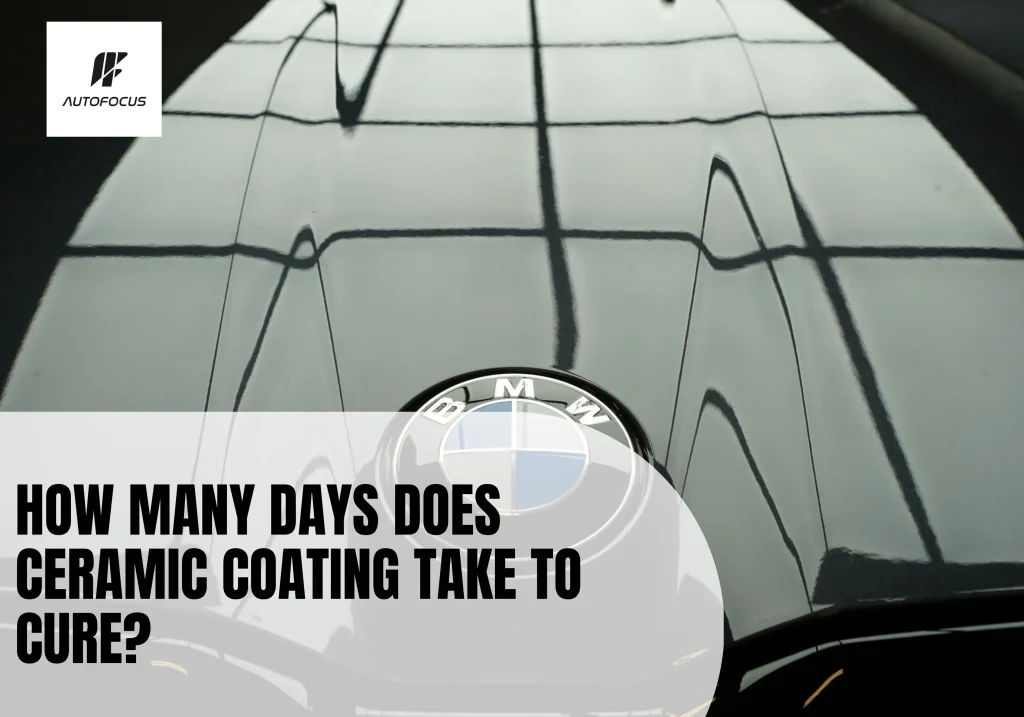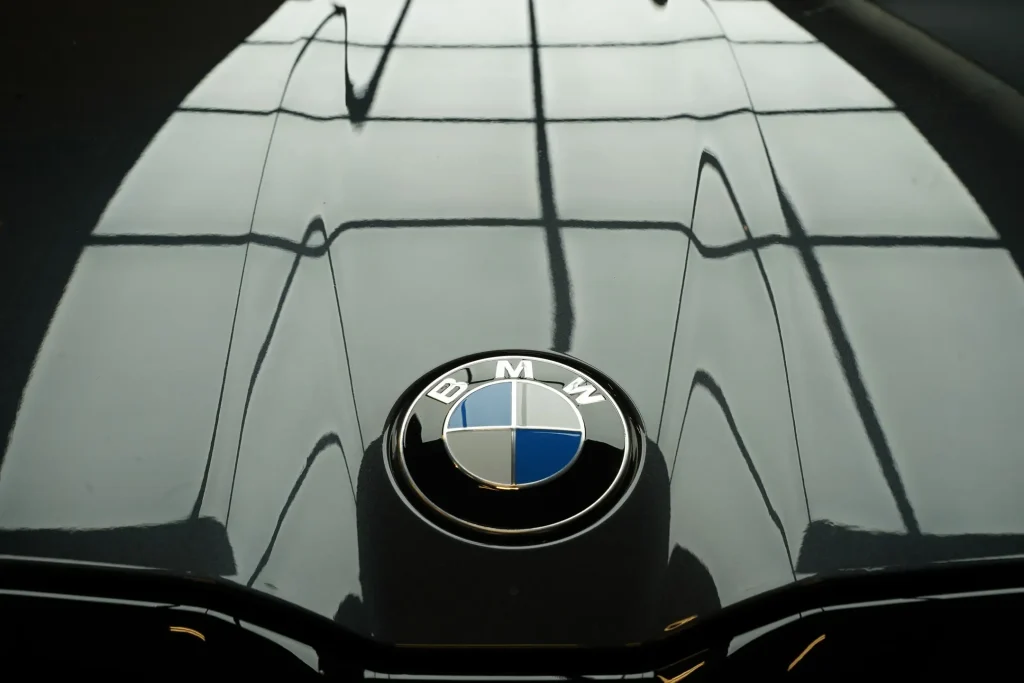
Driving away with a fresh ceramic coating feels reassuring. But here’s the shocking reality: Your investment isn’t fully protected the moment you leave the shop. Despite the price tag, that shield needs time to harden before your car can confidently face the elements.
Many Tesla, BMW, and Range Rover owners discover this the hard way, watching their investment deteriorate because no one explained the science behind the waiting game. The question isn’t just “how long does it take?”—it’s “what happens if I get this wrong?” Let’s pull back the curtain on the curing process that determines whether your coating becomes bulletproof armour or an expensive disappointment.
What Really Happens When Liquid Becomes Armour (The Chemistry Your Installer Won't Explain)
Ever Wonder Why Premium Coatings Fail Before You Even Leave the Driveway?

Ceramic coating bonds to your paint through a chemical reaction with airborne moisture. Silicon compounds transform into silanols, then cross-link into silicon-oxygen chains—that’s what creates the hard, protective shell.
The catch? Humidity needs to sit between 40% and 80%. Both Gtechniq and CarPro specify this range—it’s not optional. Too dry? The reaction crawls to a halt, and you’re left with weak spots. Too humid? The surface cures too fast, trapping solvents underneath that’ll compromise the whole thing. And temperature? Every 10°C jump basically doubles how fast it cures.
Industry guidelines aren’t all the same. For example, IGL Coatings advises waiting 3–5 days for their formula to reach full strength, while Ceramic Pro urges owners to allow up to two or three weeks—depending on environmental factors—before the coating achieves maximum protection. System X indicates 2-3 days to hardness. Feynlab documents 24-48 hours initially, with complete curing taking up to several weeks. The standard timeline? Expect 7-14 days for full molecular cross-linking.
Why Rushing the Cure Time Ruins Your Investment
Cutting corners during curing leads to lasting problems—once those protective bonds get interrupted, weak spots form that can’t be fixed. If water hits your coating within the first day, you’ll see permanent spots. Using chemicals too soon leaves soft patches that wear fast, and even a surprise shower in the first 48 hours can force a complete redo. Rush it, and you’re looking at voided warranties and expensive fixes—all out of pocket.
The Ceramic Coating Timeline Nobody Warns You About (And Why Ignorance Costs Thousands)
The Critical First 48 Hours: What You Absolutely Cannot Do

First 48 hours? Keep your car bone dry. That means no rain, no dew, no washing—nothing. Park it inside or under a proper cover. Morning condensation alone can compromise the cure. Keep your hands off—skin oils mess with the chemistry. Skip parking under trees too, unless you want sap and debris ruining things. If something lands on it, call your installer. Don’t try fixing it yourself.
Days 3-7: The Strengthening Phase
The surface has achieved initial hardness, but deeper molecular layers are still cross-linking. You can drive cautiously, but continue avoiding water exposure. Light dust can be removed with dry microfibre cloth only. The coating develops its hydrophobic properties during this phase—you’ll notice water beading becoming tighter daily.
Days 8-14: Achieving Maximum Hardness and Durability
By day eight, your coating has achieved the majority protective capacity. However, complete curing continues through day fourteen, when the deepest molecular layers finish transforming. After fourteen days, your coating reaches full maturity with maximum scratch resistance, chemical resistance, and longevity.
Why Sydney's Weather Is Either Your Coating's Best Friend (or Worst Enemy)
Banksmeadow’s Temperature and Humidity Factors
Sydney’s coastal humidity—usually between 65% and 75%—lands right in the zone that scientists say helps ceramic coatings cure properly, with research showing that around 80% humidity delivers the best results for durability and finish.
The research studied ceramic coatings at various temperatures and humidity combinations. Findings? Around 80% humidity with controlled heat. Dial in 50°C at 80% humidity, and hardness jumps to 450 N mm⁻². Leave it to chance? You’re looking at 250 N mm⁻². Temperature and humidity work together—change one, and the other shifts how your coating cures.
Sydney’s weather throws curveballs at ceramic coatings. Summer heat can flash-cure the surface, trapping solvents underneath and leaving you with weak protection. By contrast, cool winter days slow the process down, sometimes stretching the curing period out to nearly three weeks
Seasonal Considerations: When to Book Your Coating Service
Spring and autumn hit that sweet spot—18-25°C where coatings cure properly. Summer? You’ll need climate control, or you’re asking for problems. Winter applications extend vehicle downtime significantly.
Here's What Happens When Precision Meets Shortcuts
The Autofocus Solution Advantage: Climate-Controlled Facility
Premium manufacturers like Gtechniq and CarPro require controlled environments for warranty validity. At Autofocus Solution’s Banksmeadow facility, climate control eliminates guesswork. Consistent temperature and humidity mean predictable cure times and optimal performance—no flash curing, no extended waits.
What Premium Brands Like Gtechniq and CarPro Demand from Applicators
Gtechniq requires temperature control between 5-25°C during application. CarPro mandates humidity monitoring. These aren’t arbitrary rules—they’re tested protocols that make the coatings actually work. Meeting these standards means you’re paying for environmental conditions that allow premium coatings to achieve full potential.
What Most Owners Keep Missing During the Cure
Immediate Aftercare: The First 24 Hours Post-Application
Keep your vehicle covered and dry. Skip driving if you can. Keep your hands off—skin oils mess with the chemistry. Anything lands on it? Call your installer, don’t try fixing it yourself.
Week One: Dos and Don’ts for Your Freshly Coated Vehicle
Do: Keep the vehicle dry and sheltered. Remove light dust with dry microfibre only.
Don’t: Wash under any circumstances. Apply no products whatsoever. Avoid automatic car washes. Don’t park near sprinklers or construction sites.
When Can You Finally Wash Your Car? (And How to Do It Right)
After seven days, you can rinse with plain pH-neutral water—no soap yet. At the two-week mark, switch to a pH-neutral shampoo designed for ceramic coatings. Use the two-bucket method, work top to bottom, and rinse your mitt frequently.
Why Elite Brands Stake Their Reputation on Perfect Curing (And What It Means for Your Warranty)
How Suntek and Stek PPF Work with Ceramic Coating Cure Times
Premium paint protection film brands like Suntek and Stek engineer durability that outlasts warranties. When paired with ceramic coatings, curing timing becomes critical—the coating must bond to both paint and PPF. Elite brands specify precise protocols tested across thousands of applications. Their 12-year warranties validate superior formulations paired with rigorous standards.
The 12-Year Warranty Promise: Why Proper Curing Matters
Suntek’s 12-year warranty requires professional installation following manufacturer protocols—including proper curing. Warranty claims fail when coatings don’t cure properly, detectable through hardness testing. Professional installers document environmental conditions and maintain climate control logs, protecting your warranty claim years later.
Your Investment Deserves Professional Precision
Why AF Solution’s Meticulous Approach Protects Your Timeline
At Autofocus Solution, protection is handcrafted with meticulous attention in climate-controlled conditions. Located at Unit 7, 15 Meadow Way, Banksmeadow, the facility eliminates variables that compromise performance. Working exclusively with Gtechniq, CarPro, Suntek, and Stek means adhering to exacting standards that validate manufacturer warranties. Sydney’s premium vehicle owners trust results that maintain showroom brilliance years after application.
Take the Next Step: Get Your Free Consultation
Contact the team on 0480 512 269 to discuss your protection needs. Drop by our studio where your complimentary consult comes with trusted advice and guaranteed premium protection for your car.
Don’t gamble with DIY applications that can’t control critical variables. Choose precision, expertise, and facilities that coating chemistry demands. Book your protection service with Sydney’s detailing specialists here—your vehicle’s future brilliance starts with choosing installers who understand that perfect protection requires perfect conditions.